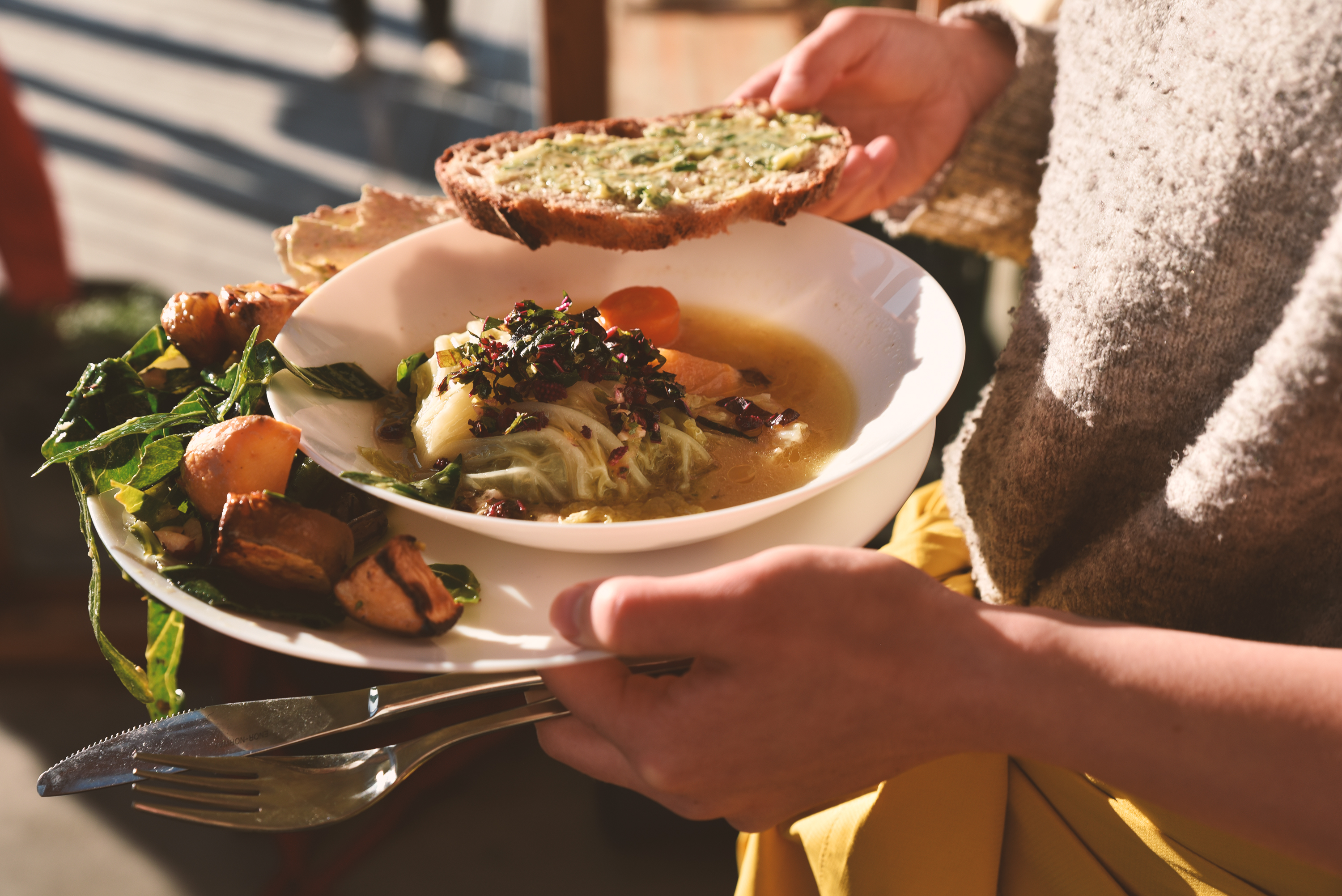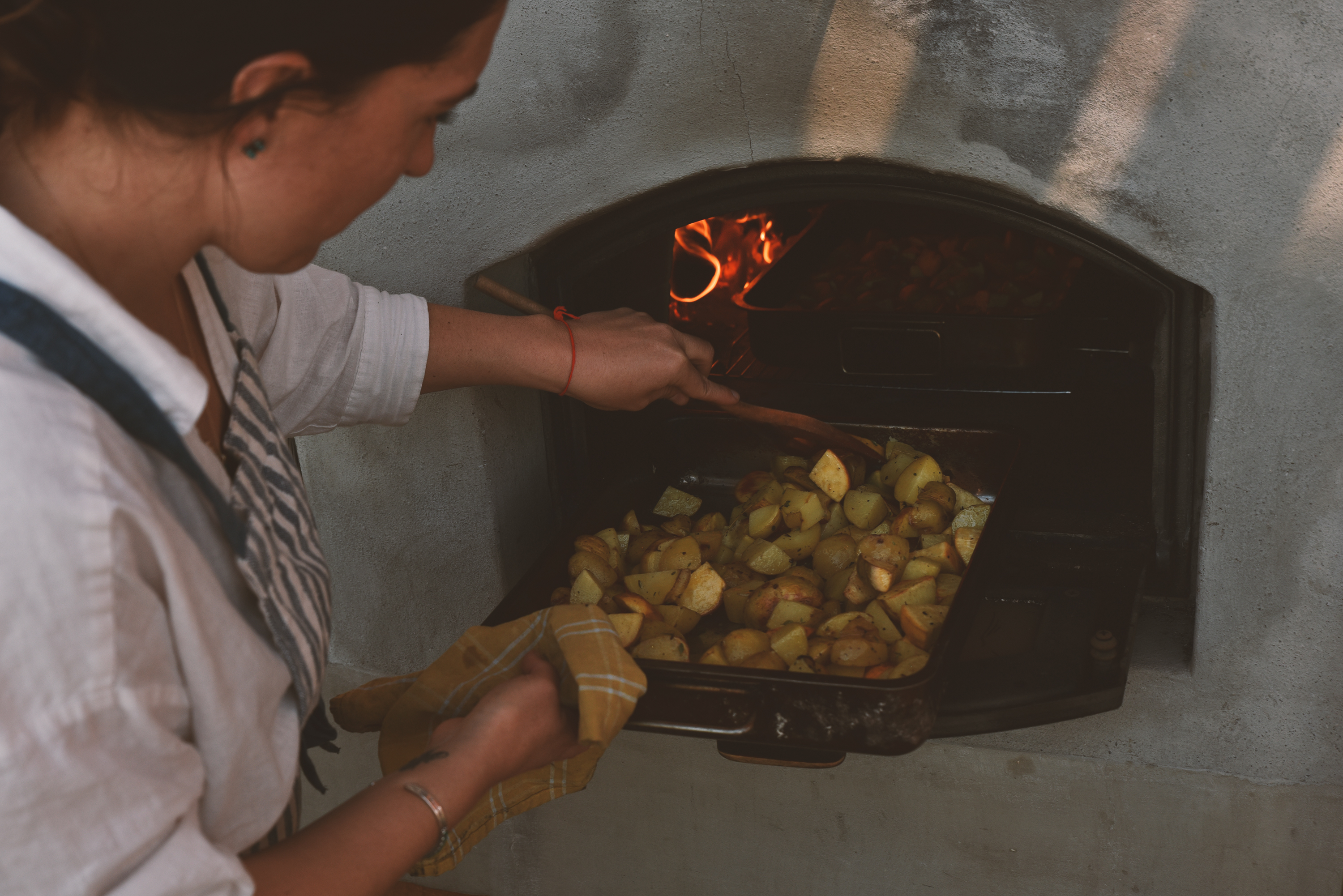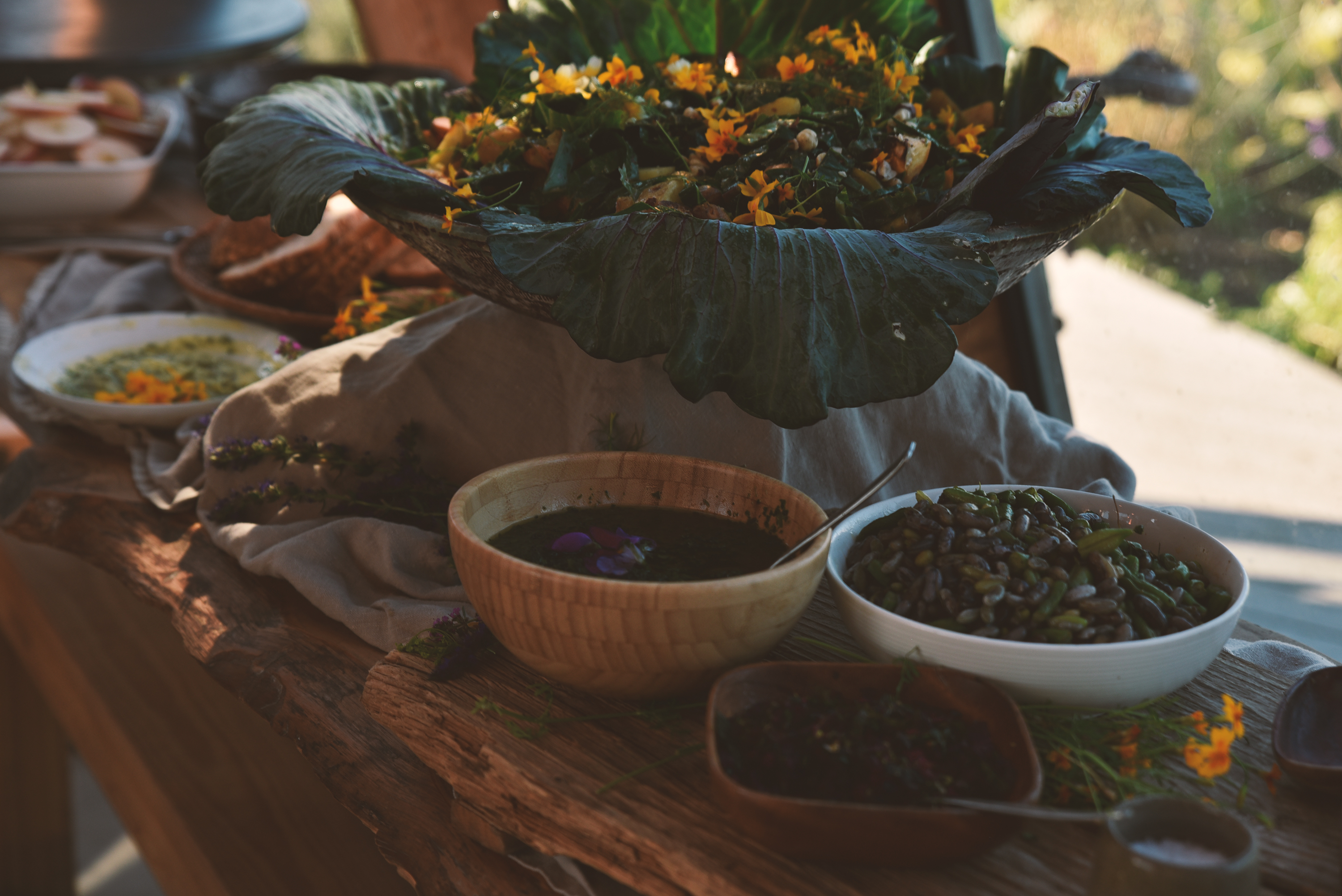Recipe
Shetland kale
Shetland Kale and fall roasted vegetable salad
500 grams shetland kale
Malselv nepe
Potato
Carrot
Victory onion pesto
Edible garden herbs
Fresh seasonal herbs such as thyme, rosemary, sage, or marjoram.
Oil of choice to coat vegetables (rapeseed oil or olive oil)
Chop root vegetables into small bite sized chunks. Toss with oil of choice, herbs, salt and pepper. Place in a baking dish or sheet pan. Place in a preheated oven at 200 degrees celsius. Roast for 20-30 minutes or until there is a caramelized roasted color on your vegetables. Set aside to cool completely. Meanwhile start a pot of boiling water. Blanch shetland kale leaves in water for 30 seconds to a minute. Remove from water and run under cold water to cool. Once all leaves have been lightly blanched, stack them on top of each other and slice into long strips about 12 mm length. Place into a large serving bowl and toss with vinaigrette along with cooled roasted vegetables, drizzle with pesto and decorate with wild edible garden flowers.
Vinaigrette:
1 Tablespoon mustard
1 Tablespoon local honey
3 Tbs apple cider vinegar
120 ml olive oil
Sea salt and pepper to taste
Victory onion pesto
1 large bunch victory onion
Enough rapeseed oil to allow breakdown and liquid consistency to be a runny consistency
Taste with sea salt and pepper
Viking sheep stew with malselv nepe and shetland kale
½ kg carrots
½ kg leeks or onions
1 large bulb of celery root
½ kg malselv nepe
2 bay leaves
3 T apple cider vinegar
3 kg sheep with bones
Assortment of garden herbs such as sage, marjoram, thyme, oregano- tie with cooking twine into a small bundle with bay leaves
Black peppercorn
Sea salt
2 big handfuls of shetland kale
Garnish:
Small nob of horseradish
Garden bitter flowers such as ruccula, nasturtium, amaranth leaves
Parsley
Chop all vegetables into medium to small chunks and place in a pre-heated heavy pot coated in neutral oil of choice. Sautee vegetables until soft about 10 minutes. Throw in the bundle of herbs and de-glaze quickly with apple cider vinegar. Place sheep pieces on top of the vegetables and cover with water about 6 cm over the ingredients. Add a few big tosses of salt and pepper to taste. Bring water to a boil then simmer for a minimum of 4 hours. The longer the better! Alternatively you can prepare over an open fire, keep a medium level of heat going while the stew simmers or lightly boils for as long as you can, anywhere from 4-6 hours. Taste with extra salt and pepper. Meanwhile prepare the bitter herbs to garnish the stew. You can substitute the horseradish with a few cloves of raw garlic. Mince all ingredients and toss to combine.
Garden Herb butter
Mustard green flowers
Caraway seed flowers
Amaranth seed and leaves
Nasturtium flowers
Ruccula flowers
Chives
Parsley
1 block Røros butter
Leave butter out for a few hours or overnight to soften. Finely chop herbs and flowers and whip into butter. Place in the fridge to cool and harden. Enjoy on top of fish, bread, and put a dollop on a rice dish. Eat it any way you like!
Norwegian pencil beans:
½ kg fresh pencil beans beans
Bay leaf
Peppercorn
Sea salt
Roros butter
Crushed garlic
Marjoram, oregano or rosemary
Set a pot of water to boil with bay leaf, a few peppercorns (don’t add salt yet)
Let fresh beans boil for anywhere from 10-30 minutes. Test for a creamy soft texture, the cooking time of the beans depends on the size. Strain and place into a saute pan with butter, lightly chopped herbs, and garlic. Alternatively this would be a wonderful place to use any reserved rendered fat you might have such as duck, ox, or sheep in place of the butter. Season with salt and pepper.
** Dried beans: if you have dried beans place ½ kg in a non-reactive bowl covered with water and let sit overnight. Bring the seasoned water (remember no salt as this will make the beans tough) to a boil and add beans. Let cook for approximately 1 hour until soft. Follow the steps for saute and enjoy.
Fresh pea hummus
Boil fresh peas in a pot for 5-10 minutes until soft. Place cooked peas in a mixer or blender and add a few big glugs of oil of choice along with 3-6 Tablespoons of butter depending on desired creaminess and taste. Mince a few Tablespoons of fresh mint and garlic. Blend until smooth or you can leave chunky as we did. Season with salt and pepper.
One of the things you notice when cooking with garden fresh vegetables, particularly ones that have a degree of variation from the conventional ingredients we are accustomed to using, is that they are never predictable. Nature presents its bounty to us in the form of inconsistency on some level and as the cook you have to be comfortable adapting and trusting your instincts with these varieties. Old time honored traditions of cooking principles still apply to these dishes and produce but it’s up to the cook to think outside the box so to speak. At least that’s what you assume when in essence it simply requires a surrender to simplicity. To act out the basic cooking rituals we all have ingrained in us, cooking the “old way” as we did for this dinner over fire and with limiting the ingredients we used in each dish was a delight. The pretense was gone, the focal point on our fork was these wondrous, pure ingredients that need no thought, they need no fuss. Cooking from the farm to fork is a life principle for me as a chef that requires the surrender to simplicity and honor for the richness that each plant brings.


